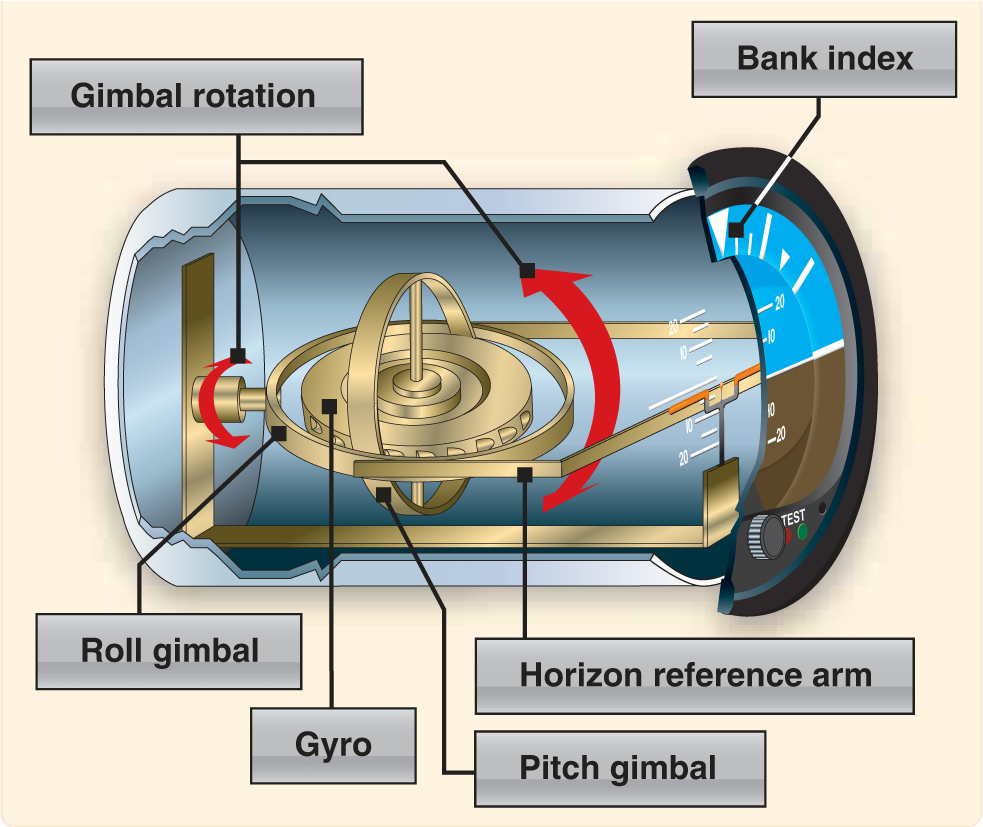We’re focusing this week on flight instruments and today we’ll cover the attitude indicator. The attitude indicator is reliable and the most realistic flight instrument on the panel; its indications are very close approximations of the actual attitude of the aircraft. Check out our previous posts on flight instruments, including our introduction to the gyroscopic instruments. Words and pictures in today’s post are excerpted from the Pilot’s Handbook of Aeronautical Knowledge.
The attitude indicator, with its miniature aircraft and horizon bar, displays a picture of the attitude of the aircraft. The relationship of the miniature aircraft to the horizon bar is the same as the relationship of the real aircraft to the actual horizon. The instrument gives an instantaneous indication of even the smallest changes in attitude.

The gyro in the attitude indicator is mounted in a horizontal plane and depends upon rigidity in space for its operation. The horizon bar represents the true horizon. This bar is fixed to the gyro and remains in a horizontal plane as the aircraft is pitched or banked about its lateral or longitudinal axis, indicating the attitude of the aircraft relative to the true horizon.
The gyro spins in the horizontal plane and resists deflection of the rotational path. Since the gyro relies on rigidity in space, the aircraft actually rotates around the spinning gyro. An adjustment knob is provided with which the pilot may move the miniature aircraft up or down to align the miniature aircraft with the horizon bar to suit the pilot’s line of vision. Normally, the miniature aircraft is adjusted so that the wings overlap the horizon bar when the aircraft is in straight-and level cruising flight.
The pitch and bank limits depend upon the make and model of the instrument. Limits in the banking plane are usually from 100° to 110°, and the pitch limits are usually from 60° to 70°. If either limit is exceeded, the instrument will tumble or spill and will give incorrect indications until realigned. A number of modern attitude indicators do not tumble.
Every pilot should be able to interpret the banking scale illustrated below. Most banking scale indicators on the top of the instrument move in the same direction from that in which the aircraft is actually banked. Some other models move in the opposite direction from that in which the aircraft is actually banked. This may confuse the pilot if the indicator is used to determine the direction of bank. This scale should be used only to control the degree of desired bank. The relationship of the miniature aircraft to the horizon bar should be used for an indication of the direction of bank.

On Thursday, our CFI will share his favorite flight instrument and some related FAA Knowledge Exam questions you might encounter on your own test!
Want to get new Learn to Fly Blog posts delivered straight to your inbox the moment they’re published? Sign up to our new email subscription service on top of the sidebar to the right! You’ll only get new Learn to Fly Blog posts and we won’t share your email address with anyone ever. Thanks for reading the Learn to Fly Blog!




